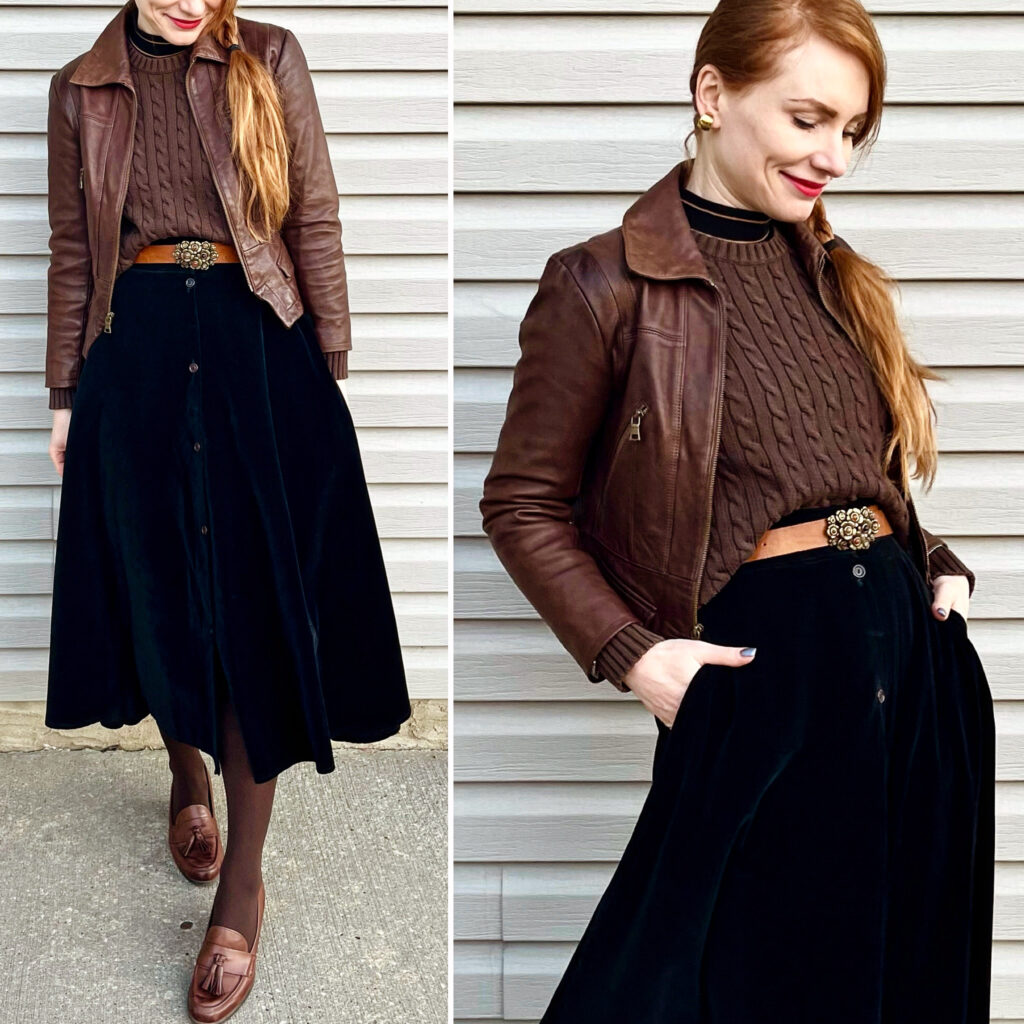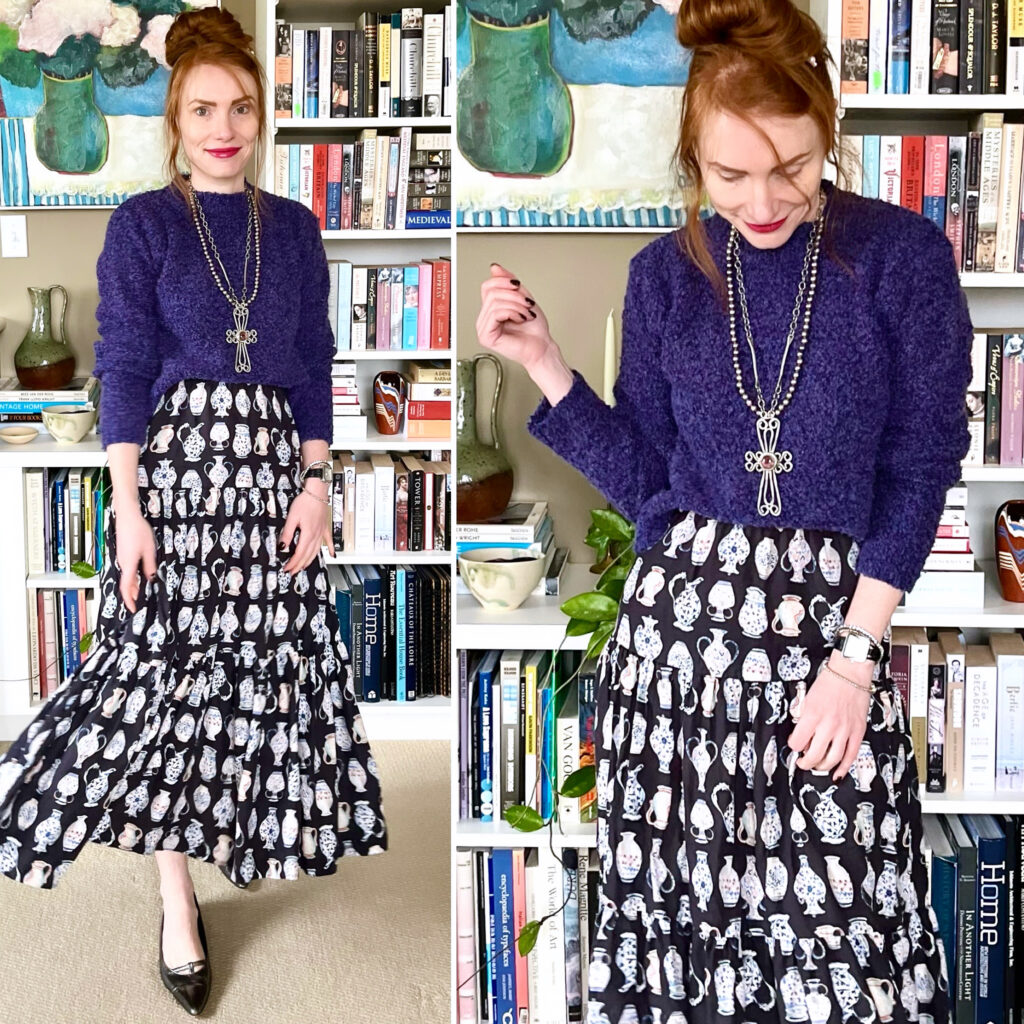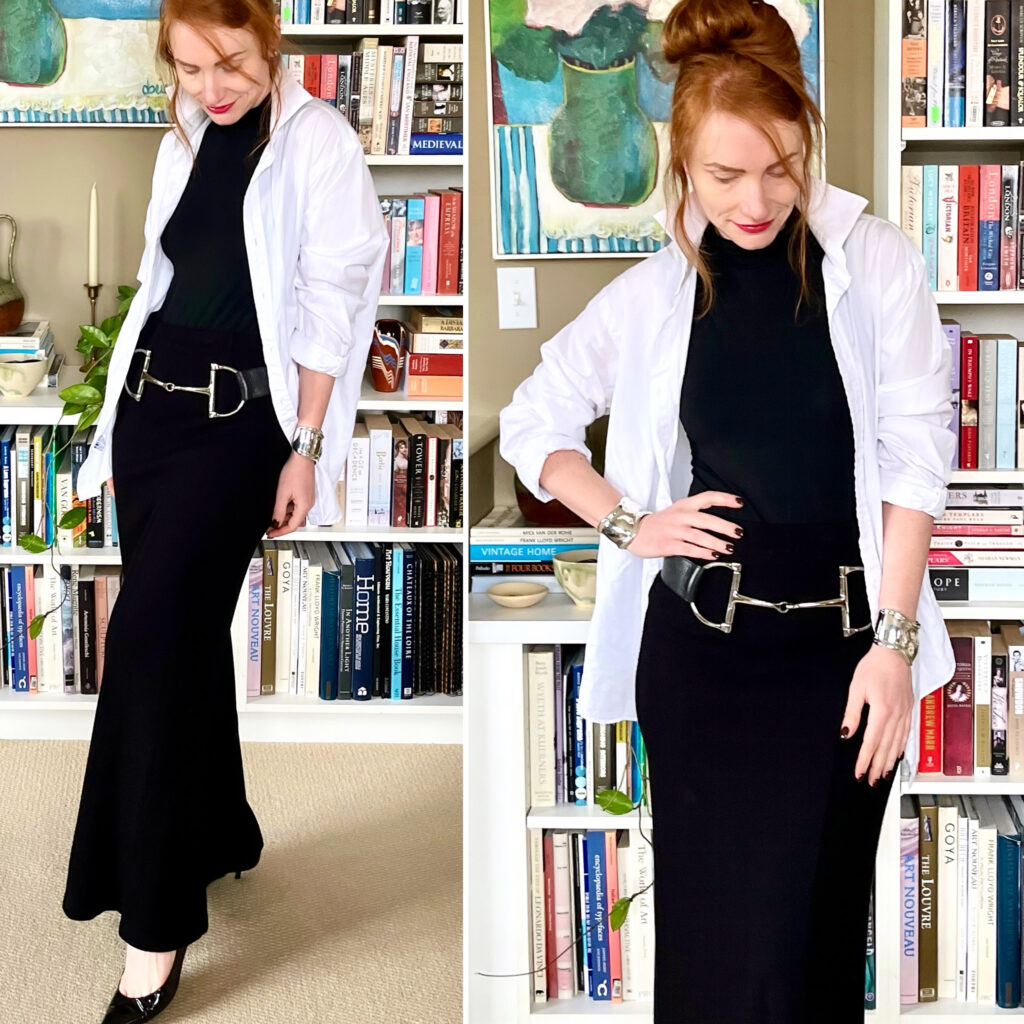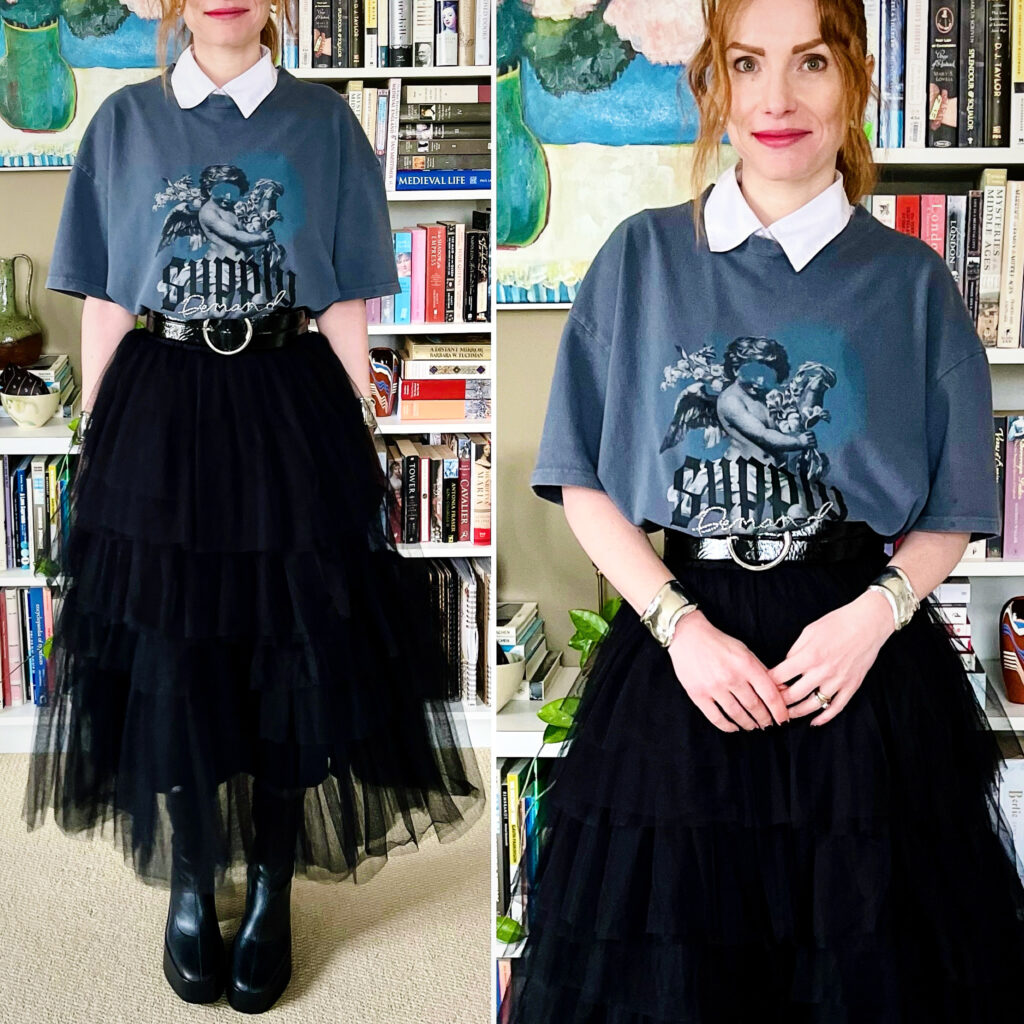
Details: Toni T dickie, Supply & Demand tee, Chicwish skirt, Banana Republic belt (all secondhand), Zara boots (retail)
Thoughts: Wednesday Addams meets 90s grunge meets my obsession with greyish blue. The colour isn’t the only reason I thrifted this graphic tee; I am also obsessed with cherubs. Weird, I know. Or maybe not so weird, considering I am a younger Gen X and had the mandatory poster of Bouguereau’s kissing cherubs on my wall at a certain point in my life. Were you even a teenager in the mid-90s if you didn’t? Anyhoo. This outfit was based on the simple idea that this black tulle skirt never met a graphic tee she didn’t like. I added the white-collar dickie because I like how it changes up the vibe of a basic tee. And voila, outfit.

Details: Banana Republic turtleneck, Uniqlo sweater, Ralph Lauren trench, Banana Republic jeans, Coach bag (all thrifted)
Thoughts: I am utterly obsessed with this Uniqlo sweater. UTTERLY. I want to wear it with everything, and it wants to be worn with everything. The colour is sheer perfection, 10/10, no notes. The sweater itself is lovely: 100% wool, good weight (not to heavy, not too thin), not too scratchy, perfectly cropped length, very nice quality. I have been very impressed with the quality of some of the Uniqlo knit pieces I’ve come across at the thrifts lately, this being only one example (albeit my favourite). I layered the sweater, as I do all my wool sweaters, over a thick, cotton turtleneck — the colour of which just happens to be a fantastic match — and that provided enough insulation to help me carry off wearing my fave trench instead of a bulkier jacket. It was snowing that day, but not especially cold, and I refuse to concede it’s winter until Mother Nature beats me into submission. Not literally, I hope. Also, we haven’t talked about that bag yet … but we will.

Details: vintage shirt, Ralph Lauren sweater & skirt & jacket, Coach bag (all secondhand)
Thoughts: Just all the Ralph Lauren things.

Details: Babaton turtleneck, Everlane sweater, Jones & Co. jacket, Banana Republic jeans, Coach bag (all thrifted)
Thoughts: Okay, guys: that bag. I haven’t been moved to buy a shoulder bag in aaaages, but something about this one immediately spoke to me when I spotted it at Value Village. The colour accounts for a lot of its appeal; it’s not a deep deep red, but it’s pretty saturated and very, very red. Love that. And there is also something to be said for the shape, which is surprisingly appealing given how committed I have been in recent years to small crossbody bags. Ok, moving on. This jacked: also amazing. I am really into cropped, boxy, collared jackets, and this one checks all the boxes, with the added bonus of a fabulous houndstooth pattern. Love me some vintage Jones!
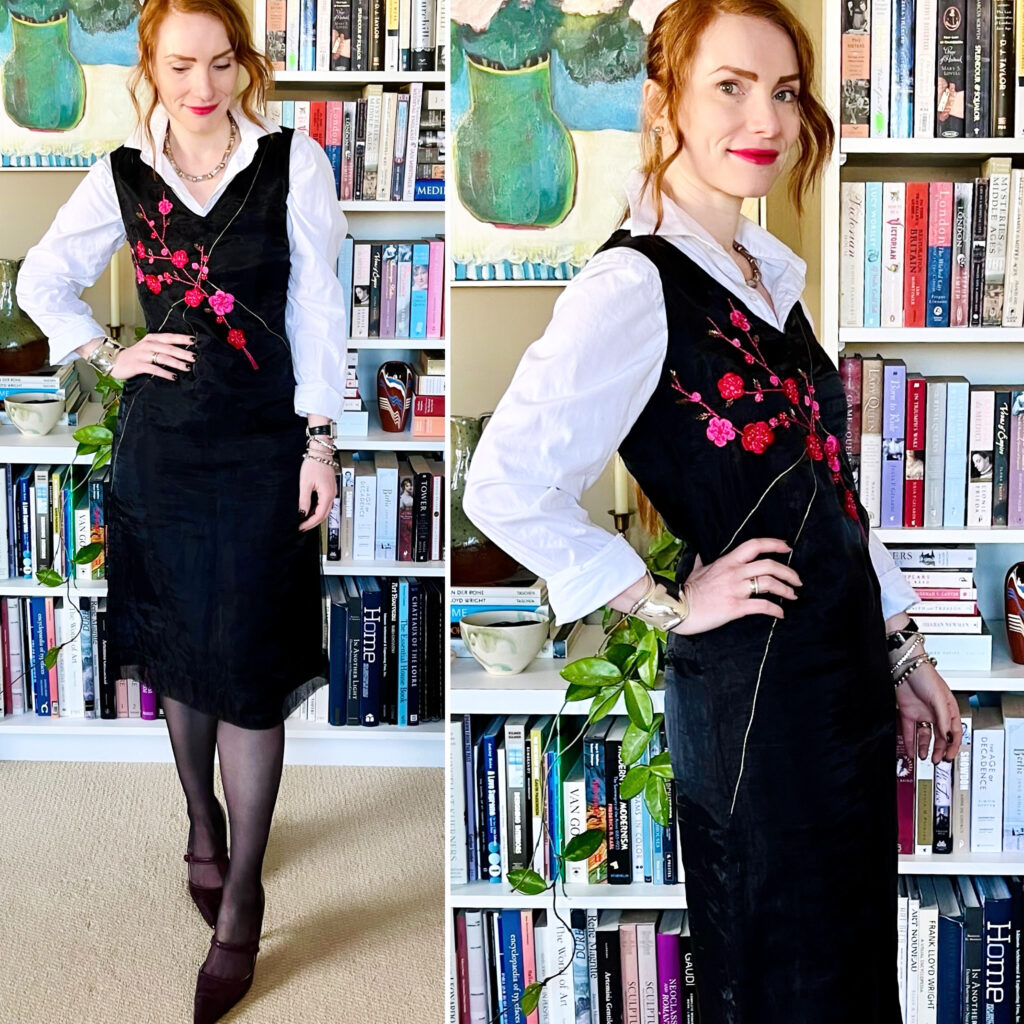
Details: Ralph Lauren shirt, InWear dress, Manolo Blahnik shoes (all secondhand)
Thoughts: I thrifted this dress because it totally set off my nostalgia radar; the 90s vibes are strong with this one. I am not wild about the length, and which it were longer, but I am determined to try to make it work for me. Paired it with a white shirt, it came over very 90s corporate creative chic.

Details: Gap shirt, Benetton cardigan, Ralph Lauren skirt, MaxMara belt (all secondhand)
Thoughts: The colour of this vintage cardigan spoke to me and it said “buy me, Adina”. So I did. And then I remembered that I thrifted this Y2K Gap washable silk shirt (remember those?) a few years ago, and it matches the colour of the embroidery almost exactly. And then I added a brown skirt, because I am convinced that brown is always the answer, assuming the question involves sartorial matters.

Details: Bozzolo tee (retail), Tahari shirt, Limited cardigan, Brighton belt, Levi’s jeans (all thrifted)
Thoughts: Denim on denim, with brown to keep things interesting. See what I mean? These 80s Levi’s are the original mom jeans, and I’m pretty pumped about them.

Details: Babaton turtleneck, vintage sweater, Chaps pants, Tough Duck coat, Coach bag (all secondhand)
Thoughts: I’m not entirely sold on these red corduroy pants. I love the colour and I love corduroy, but the cut … hmmm. However, I gave them the old college try and paired with 2 very solid pieces (the sweater and this amazing vintage preloved barn jacket), the result wasn’t terrible by half. I’m not ready to declare the pants a permanent addition to my closet, but they passed the first test.






